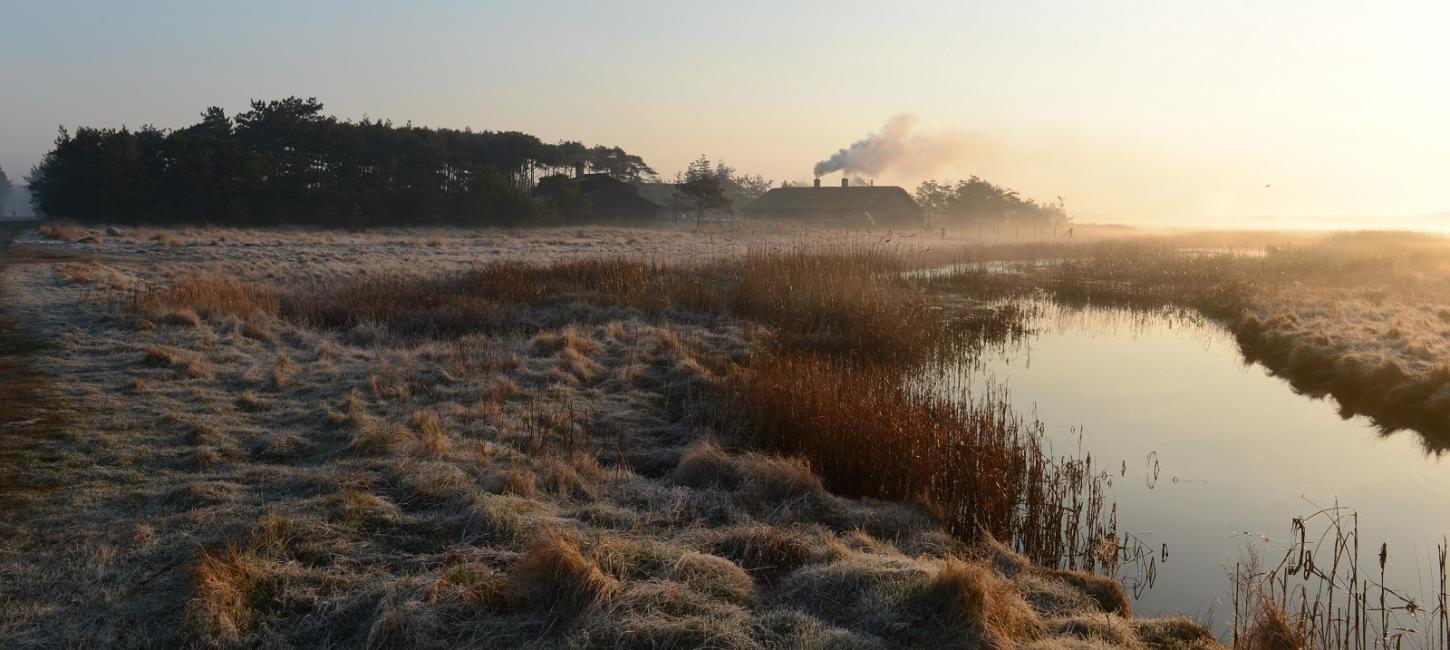
On the way to World Heritage
Læsø Salt Works and the Seaweed-roofed houses are completely unique to Læsø, which gives them great potential.
Læsø salt and seaweed on its way to UNESCO's World Heritage list
In November 2023, Læsø was accepted on UNESCO's official tentative list for the island's unique salt production and seaweed-roofed houses.
You can read more on UNESCO's website >
Photo:ta
By former state-geologist Jens Morten Hansen
Last year, 'Læsø Salt and Seaweed' was accepted as a Danish candidate to FNs World Heritage List: landscapes, buildings and historical events, which are scientifically documented as globally unique.
'Læsø Salt and Seaweed' depicts a 900-year long period from around 1150 to present day; where the connections between national- and local power, lawlessness and the worsening climate conditions during the small ice age, illustrate the reactions of the population and the landscape to changing living conditions.
The origin of salt production
The story picks up speed in the 1200s. Monks from Vitskøl Monastery had already discovered the high salinity of the groundwater on Læsø, which reaches up to 12%. In comparison, the salinity levels of seawater is only 2%.
In this discovery, the bishop of Viborg Cathedral eyed an opportunity for a profitable salt industry. If he could get ownership of the island from the King, and convince people to move to the practically uninhabited forest-island to establish 'salt boileries', there was money to be made. The idea was to offer the poor an opportunity to estalblish themselves as free farmers on the island - to till the land and build farms - on the condition that they built a 'salt boilery' and paid taxes of salt.
At the time, most people in Denmark lived under the "Vornedskab" - the serfdom institution farmers lived under. As such, many took an interest in the bishop of Viborg's new 'model', especially in the areas around Kattegat. This resulted in a steadily rising number of farms and salt works on Læsø for 400 years, from around 20 salt works in the 1200s to at least 135 in the 1500s.
From sustainability to lawlessness
Under the rule of King Valdemar Sejr, the cathedral owned and had the authority on Læsø - deciding who could live on the island, where to build, how much salt had to be paid and how much each farmer was allowed to produce for themselves. The cathedral dictated the production methods to ensure the high quality of the salt, and most importantly, the cathedral ruled over how the forest was to be tended to and renewed.
But during the Danish Reformation in 1537, all authority and ownership was taken away from the church by the king, with no new authority being appointed to Læsø. As a result, farms would steal firewood and lumber, establish more salt works and harvest the reward.
The result was a serious growth in the number of salt works, and when the small ice age's colder climate simultaneously decreased the salinity levels, more firewood was necessary to produce the salt. These conditions meant that the forests disappeared, and Læsø could neither produce salt nor grain enough to feed the big population.
The forest area of the island was, in a few decades, reduced to almost nothing, and the number of salt works went from 135 to 0 in 1652, where the salt production seized completely.
Concentrated farming and sand drifting
As a response to famine, a new shape of farming started to form, wherein big masses of peat was transported from the outer areas of the island, to the inner farming areas. The purpose was to produce compost.
But the removal of such big amounts of peat resulted in the sandy soil now being exposed to the wind's erosion. Soon, sand dunes gathered, moved across the island, and destroyed the village of Hals, amongst others. In this way, the former forest-covered island became forest-less for more than 300 years - from the Northern Wars 1640-59 until the 1950s, where Læsø Klitplantage (Læsø dune plantation) began re-establishing the island's forests.
The seaweed houses - built out of necessity
300 years of powerty resulted in a shortage of practically everything, especially lumber for construction. This created a new - and globally unique - building technique, which substituted roofs of straw with roofs of seaweed; and timber was substituted with wreckage-material. This building technique uses as small amounts of lumber as possible, and instead makes use of the island's materials in a new way: The enormous amounts of beached eelgrass for the roofs, pebbles for the floors and the underground clay for wall-construction.

Landscape history as world heritage
Læsø is a globally unique example of how a community finds new basis of existence, and how important the correlation between nature-given conditions, laws, inventiveness, community and self-reliance is. The high biodiversity of Læsø's nature and the history of the protected areas are proof of that, what we experience as naturally occured glories, are, in reality, created mainly by ecological and economical changes and man's need for a tolerable life.
